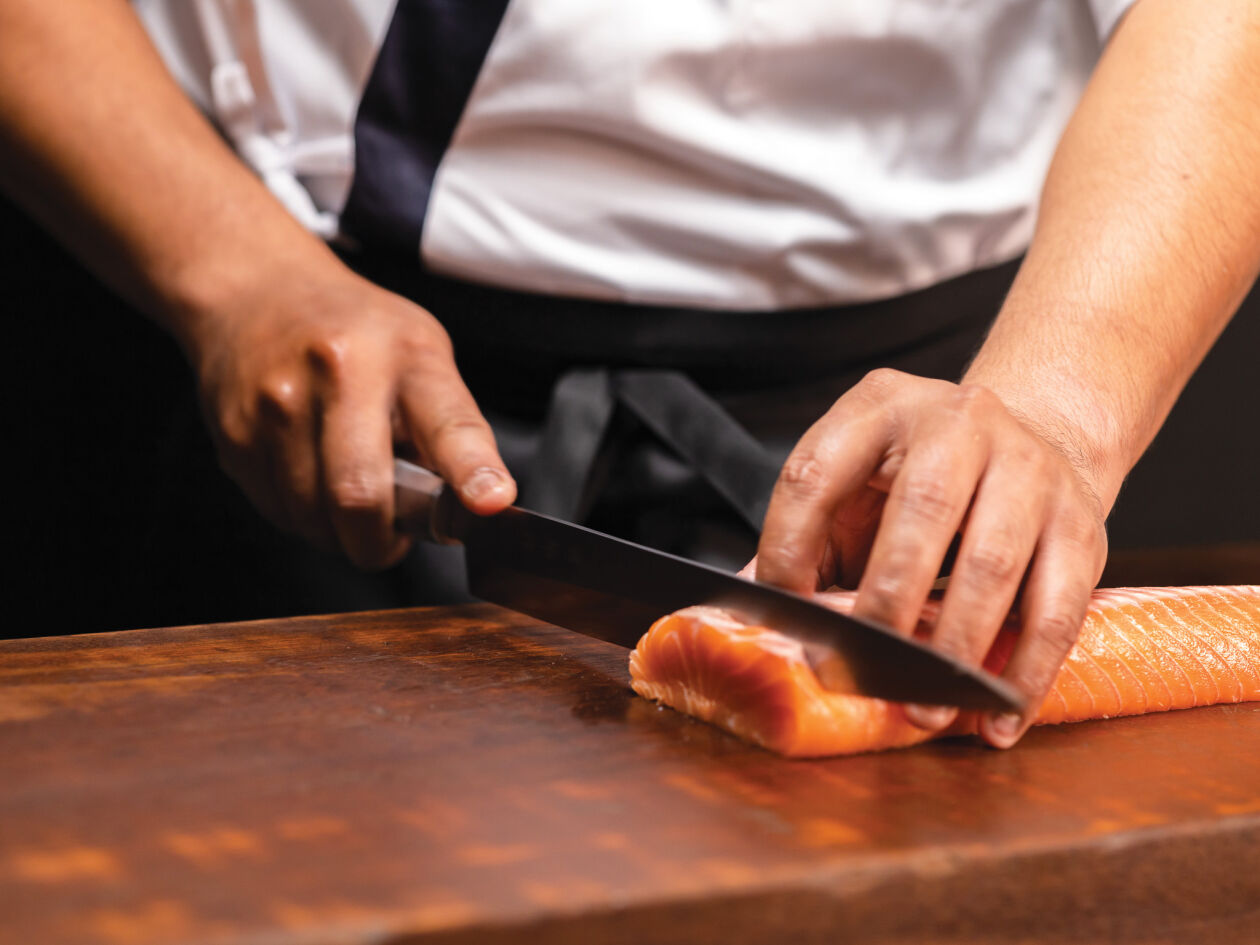Eat & Drink
The Slice is Right
Made with age - old forging techniques carried over from Samurai sword makers and revered for its sharpness, balance, and precision, a hand - crafted Japanese knife is as much a work of art as it is an essential culinary tool..

If you’re an avid home chef, you might be familiar with the premium pedigree that Japanese knives enjoy in kitchens around the world. Unlike heavier Western knives, Japanese knives are known for their exceptional balance, and lightweight feel, which can make cooking more enjoyable and less physically demanding. No trip to Japan is complete without visiting an artisan knife store and perhaps bringing one home for yourself. And with the growing appreciation for Japanese cuisine and craftsmanship in New Zealand, many local specialist retailers offer a curated selection of handcrafted blades from Japanese blacksmiths. But with many specialised blade designs tailored to specific culinary tasks, selecting the right Japanese knife may seem daunting. Let’s remove some of the confusion by focussing on the three primary all-purpose knife styles, the distinctions between blade materials, and the art of Damascus forging – a craft that gives Japanese knife blades the literal edge.
The Three Main All-Purpose Knife Styles
Santoku (三徳包丁) Meaning “three virtues”, the Santoku knife embodies versatility and is suitable for slicing, dicing, and chopping. With a blade length typically between 165mm and 180mm, it has a flat edge and a ‘sheepsfoot’ tip, curving down at an angle of approximately 60 degrees. This design promotes a more natural wrist position during use which is designed to help reduce fatigue and allow for efficient chopping motions. The Santoku is especially favoured in home kitchens for its user-friendly design and adaptability to various tasks.
Bunka (文化包丁) The Bunka knife, translating to “culture knife”, is a versatile tool characterised by its distinctive reverse tanto or ‘K-tip’. This design provides a sharp point, ideal for intricate tasks like scoring vegetables or precise cuts in meat and fish. The Bunka’s blade typically ranges from 150mm to 180mm, making it agile and suitable for both detailed work and general chopping tasks.
Gyuto (牛刀) The Gyuto, translating to “beef knife”, is the Japanese counterpart to the Western chef’s all-purpose knife. Its versatility makes it indispensable in both professional and home kitchens. Typically ranging from 210mm to 270mm in length, the Gyuto features a gentle curve from heel to tip, facilitating various cutting techniques. It’s adept at chopping, slicing, and dicing vegetables, meats, and fish. The knife’s pointed tip also allows for precision tasks, such as trimming sinew or making fine incisions.
Stainless Steel vs. Blue Paper Steel
The choice of blade material significantly impacts a knife’s performance, maintenance, and longevity. Stainless steel knives are prized for their resistance to rust and corrosion, making them relatively low maintenance items in the kitchen. They typically contain chromium, which enhances durability and ease-of-care. However, while they offer good edge retention, they may not achieve the same sharpness or retain it as long as high-carbon steel knives. Blue Paper Steel, or Aogami, is a high-carbon steel enriched with elements like chromium and tungsten. This composition offers exceptional hardness, allowing for a razor-sharp edge and superior edge retention. However, these knives are more susceptible to rust and require diligent maintenance – such as thorough drying after use and regular oiling – to prevent corrosion.
Damascus Forging
Damascus steel is renowned for its distinctive wavy pattern and enjoys a rich history dating back to ancient sword-making techniques. In modern knife crafting, Damascus forging involves layering multiple steels, forging them together, and then manipulating the billet to create intricate patterns. This process not only results in a visually stunning blade, but also combines the desirable properties of different steels, promoting attributes like hardness and flexibility. Stainless Steel vs. Blue Paper Steel The choice of blade material significantly impacts a knife’s performance, maintenance, and longevity. Stainless steel knives are prized for their resistance to rust and corrosion, making them relatively low maintenance items in the kitchen. They typically contain chromium, which enhances durability and ease-of-care. However, while they offer good edge retention, they may not achieve the same sharpness or retain it as long as high-carbon steel knives.
Whether you opt for the versatility of a Gyuto, the compact efficiency of a Santoku, or the precision of a Bunka, each knife offers unique advantages. Similarly, choosing between stainless steel and blue steel depends on your priorities between ease of maintenance and superior sharpness. Investing in a high-quality Japanese knife is not just about acquiring a kitchen tool. It’s also about embracing a piece of functional art steeped in centuries of craftsmanship and culture.

